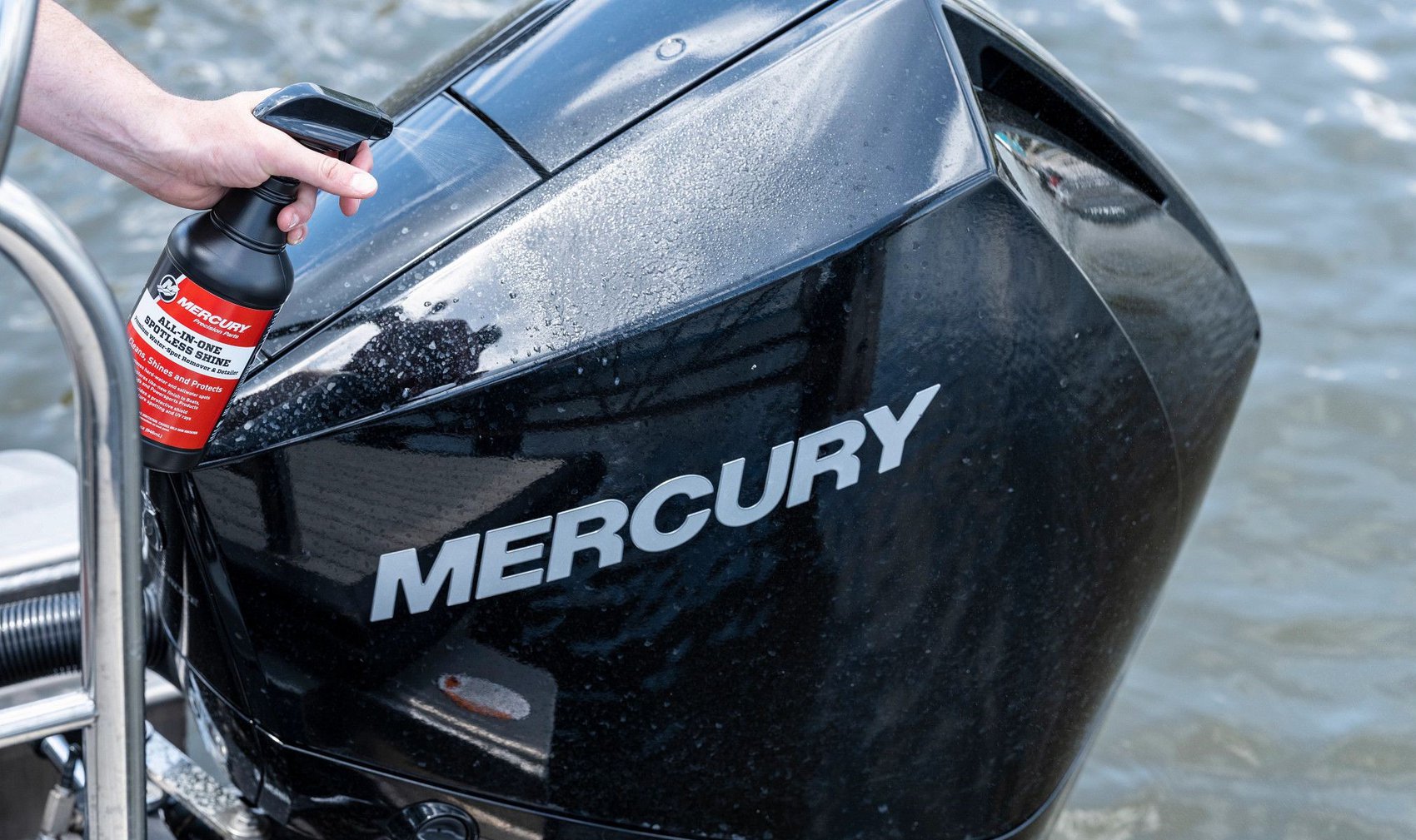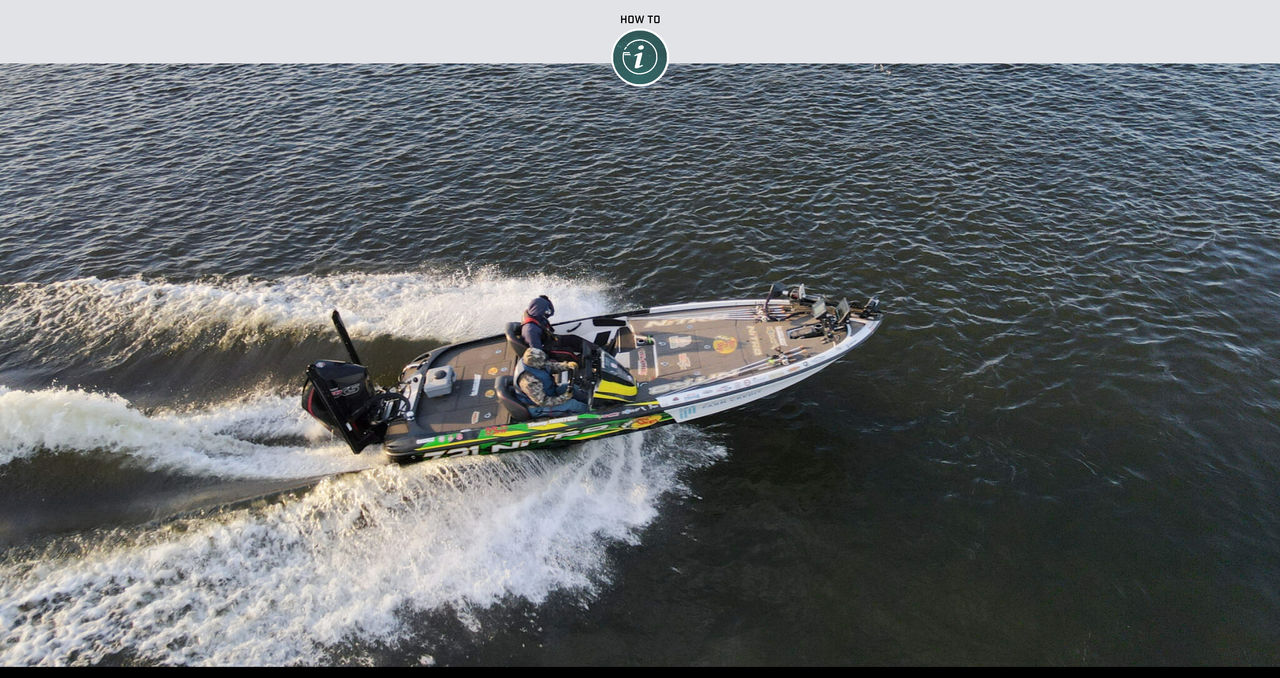Today’s bass boats combine incredible storage capacity and fishing features with performance hulls that handle with sportscar precision and can run at high top speeds. Taking the helm of one of these high-performance boats can be an exhilarating experience. If you’re new to this boat type, however, it pays to understand a little more about how to run a bass boat than simply how to drop the throttle.
Mercury Pro Team member Tim Horton is an expert on the matter, with decades of experience. The Major League Fishing pro shared some tips on how to drive a bass boat safely and for best performance. To see Horton in action, check out the video below.
Safety First
Before you run any boat, make sure you have all the proper safety equipment required for where you’re boating. Among other requirements, the U.S. Coast Guard regulations state you must have a life jacket on board for each person in the boat. In bass tournaments, it’s required to have your life jacket on and fastened whenever the outboard is running. This is the best and safest course of action anytime you’re on the water, and especially if you’re running at high speeds.
Horton also recommends testing your engine cut-off switch (ECOS), often referred to as a “kill switch,” to make sure it’s functional. This is a standard part of most tournament takeoff procedures and how Horton starts every trip.
“I’m going to crank up, get to idling out and I’m going to pull my kill switch,” Horton says, describing his routine. “(That way) I know I’ve got a fully operational kill switch. And I always do that each time. Now I know I’m good the rest of the day.”
Getting on Pad
Most bass boat hulls are designed to get on plane, or “on pad,” quickly, especially when paired with a performance-inspired outboard like the Mercury Pro XS® engine. Horton runs a 250hp Pro XS outboard on his NITRO® Z21 XL Pro bass boat. The engine’s high torque and specialized gearcase enable it to generate the acceleration and lift needed to get on plane in a matter of a few seconds. But even with 250 horses behind him, Horton makes sure to follow a few key steps.
First, scan the water to make sure there are no other boats, kayakers (or other non-motorized vessels), standing cover such as trees, floating debris, shallow bars or other obstructions out in front. Next, trim the outboard all the way in – or down – to the full tuck position. This achieves the best thrust angle to generate lift.
Like a lot of serious bass anglers, Horton runs a Hot Foot™ throttle control in his boat, which lets him control the throttle with a foot pedal much like the accelerator in your car. The pedal lets him keep both hands on the steering wheel when running on plane. If you have a similar control on your boat, make sure your foot is off the pedal so you’re not applying throttle when you shift from neutral into forward.
With those steps checked off, shift the boat into forward gear and accelerate.
“Once I do that, I’m going to give it all the gas I’ve got to get it up on pad, and then ease off (once the boat levels off),” Horton said.
Trimming on Pad
Once the boat levels off and is on pad, it’s time to adjust the running attitude by trimming out, which raises the bow. This process takes trial and error to master for each boat and engine combination, as well as to account for the load and conditions. It’s best to test your boat’s reaction to trim adjustments on a calm day in open water. Always make small adjustments as you go, and gradually work up to speed.
“This is where I want to start getting on my trim and really get the performance out of the boat that you want,” Horton added.
“Not every bass boat, or any boat for that matter, is going to perform its best trimmed all the way up. You’ve just got to find that in your boat. Look at your rpm, look at your water pressure and look at your speedometer and see where you’re getting the best performance out of your boat.”
As you get more comfortable with trimming, you’ll learn to manage your boat’s running attitude for rough water and for safely driving around curves on plane. You can also find the sweet spot for optimizing fuel efficiency on those days when you don’t need to get there quite so fast, but want to save a few dollars at the pump.
Coming off Pad
When you’re ready to come off pad, start backing off the throttle well away from your intended stopping point, and adjust the trim in.
“I like to trim the engine back down and really get it under the boat,” Horton said. “That’s going to help bring it to a slower stop and come down off pad without bouncing. And I like to give it just a little bit of gas when I come off pad to keep from having any backwash.”
Consult an Expert at Your Mercury Dealership
Remember, when you’re learning to run any boat, and especially a bass boat capable of high speeds, take it slow and always play it safe. And if you need expert advice, most Mercury Authorized Dealers that sell and service popular fishing boat brands have years of experience dialing in prop selection as well as trimming and running bass boats. They can be an invaluable resource as you gain confidence and grow your skills.
For more from Mercury Pro Team member Timmy Horton, check him out on Instagram, Facebook and YouTube, or visit his website, TimmyHortonOutdoors.com.
All trademarks are the property of their respective owners.




